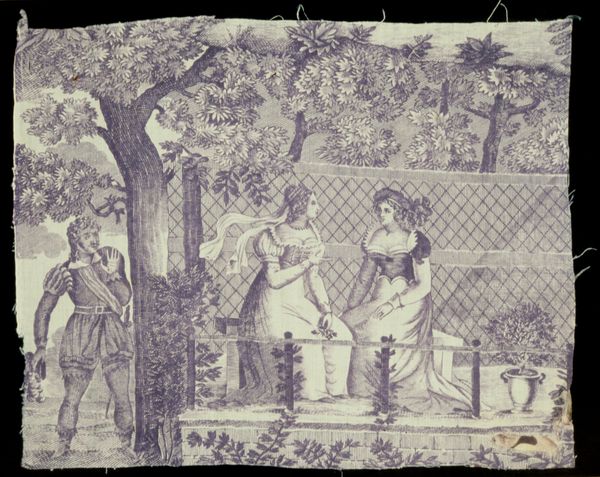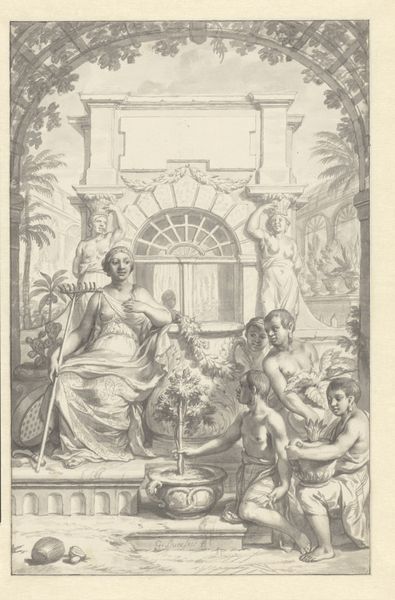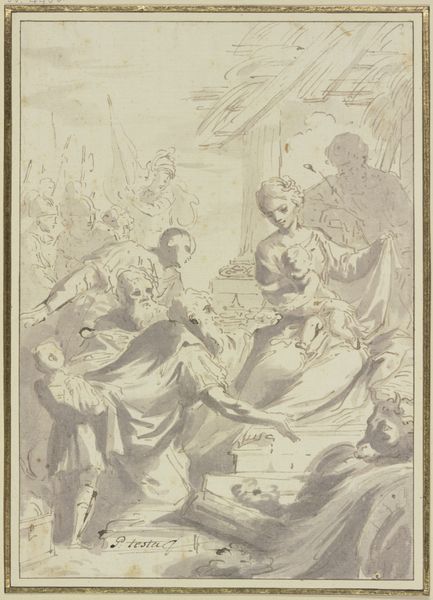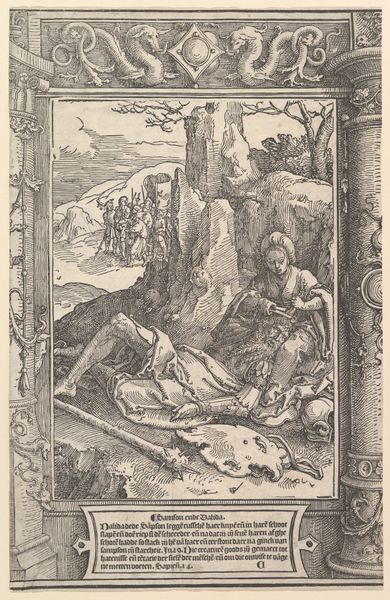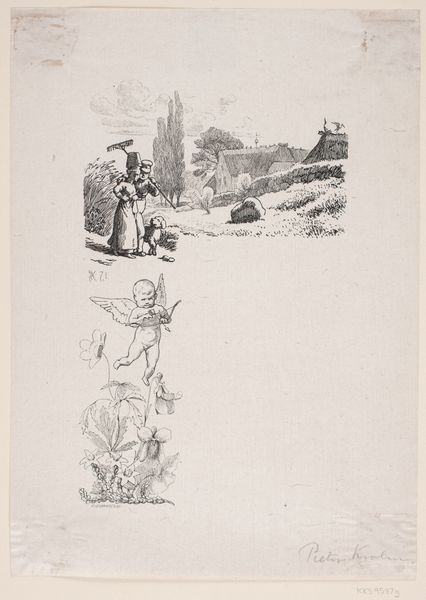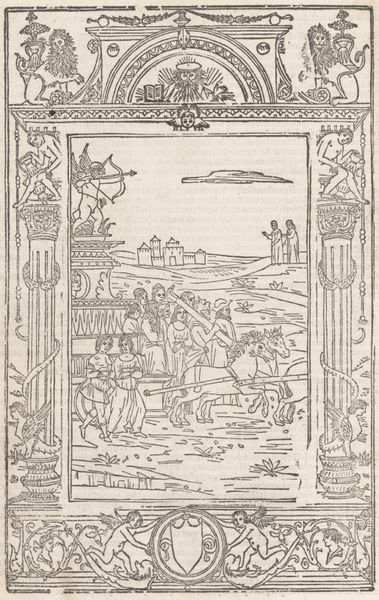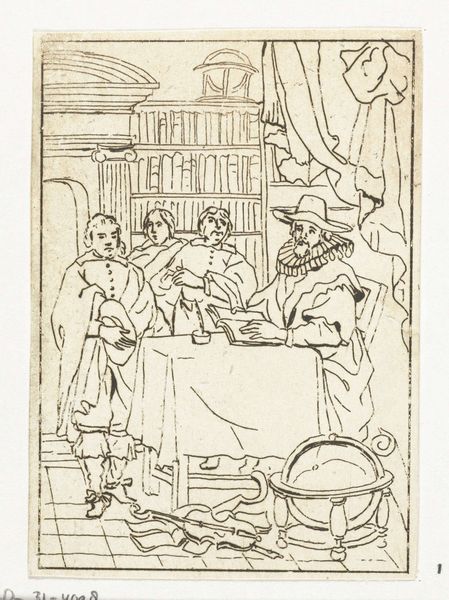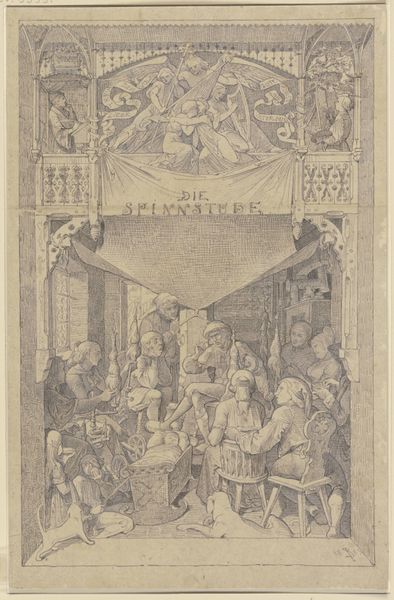
ceramic, mural
#
baroque
#
ceramic
#
figuration
#
coloured pencil
#
cityscape
#
genre-painting
#
mural
Dimensions: height 172 cm, width 145 cm, depth 2.5 cm, height 12.5 cm, width 12.5 cm, depth 1 cm
Copyright: Rijks Museum: Open Domain
Curator: Today we are observing “Twee tuinvazen aan weerskanten van een trap” created around 1707 by W. van der Kloet. Editor: My first impression is of serenity—the blue and white are calming, like gazing at the sea or sky on a peaceful day, a quiet, stately terrace. Curator: The piece certainly presents an idyllic scene, but it’s vital to acknowledge its inherent social commentary. Works like this often depict wealthy leisure and comfort made possible through exploitation of the working class. I immediately read the colonial gaze here. Editor: Absolutely. The vases, recurring throughout Dutch art and design of this era, almost feel like emblems of a certain societal aspiration—controlled nature, cultivated beauty, and the inherent suggestion of social stratification. It mirrors, too, that other classical trope, the carefully constructed arcadia, though the cityscape suggests an active merchant culture and expanding wealth beyond inherited landed titles. Curator: Precisely. This "genre-painting" exists in a baroque style and needs interrogation through critical lenses. These types of tableaus reflect very specific power dynamics during an expansionist age. Consider who gets to inhabit these idyllic scenes. We need to question the absent presences, the exploited labor making such scenes possible. How do they reinforce ideologies and impact socio-economic narratives today? Editor: The consistent use of ceramic, and of delftware's palette specifically, connects the depicted image to notions of craftsmanship, trade, and even mimicry as these Dutch artists reproduced imagery inspired by Asian motifs in their burgeoning market. Curator: Right. The tiles present a curated reality, shaped by class and the violence it implies. This is an era when national wealth was being extracted via inequitable labor models. We cannot deny art’s complicated participation within such exploitative narratives. Editor: Thinking about its lasting influence is intriguing. It underscores the ongoing human need to order our surroundings, to find or manufacture tranquility within, perhaps, a tempestuous world. Curator: It also illustrates our duty as viewers to stay alert about whose stories art can suppress. We are then better positioned to ask tougher but urgent questions about legacy, accountability, and systemic shifts, moving us toward critical reflection in any public forum.
Comments
No comments
Be the first to comment and join the conversation on the ultimate creative platform.

